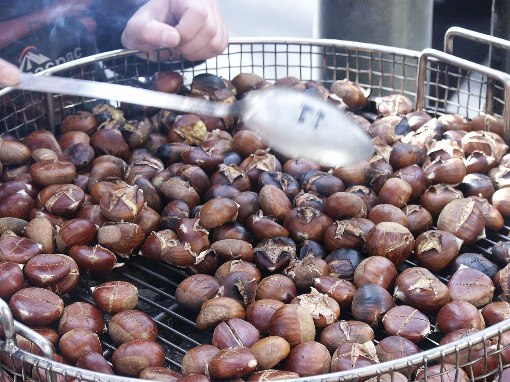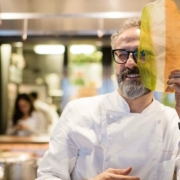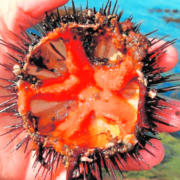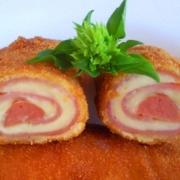Roasted Chestnuts in Spain
It´s almost time for chestnuts, sweet chestnuts – glistening mahogany as their shells open on the ground and one of the most inviting fruits of late Autumn. Who can resist the permeating aroma of chestnuts as they roast on the open fire or coals of the street seller, who, himself is swathed in woollens against the fierce chill and winds of winter. As he scoops his globules of delight into pyramid shaped bags and passes you the hand warming mass, your mouth waters at the prospect of such a delicious feast. But wait, it´s almost too hot to handle – press the blackened shell between gloved fingers and rush the roasted cream centre to your lips with caution; oh what reminders of childhood evenings by the fire at home. Truly the chestnut evokes memories for us all, be they of the first time one tasted a Marron Glacé, the chestnut stuffing in the turkey, chestnuts with Brussels sprouts – the list is endless!
To relish in the freshest of the freshly roasted chestnuts, visit the Fair of the Chestnuts (Fira de la Castanya Viladrau), held each year on 23 and 24 October in the lovely village of Viladrau in the Montseny mountains a little way north of Barcelona, in Spain. Viladrau, which is surrounded by large chestnut trees, has become an incomparable setting to celebrate this Fair, which is open to everyone and full of activities to promote chestnuts and their tradition. There is much roasting chestnuts and the consequent sale to all; different talks about chestnuts and gastronomical tastings of chestnut cuisine in local restaurants. If you want to taste beef stew with chestnuts and home-made delicious cake with chestnuts, Viladrau is the place to be!
Now for a little information about the sweet chestnut, which was introduced into Europe from Sardis, in Asia Minor; the fruit was then called the ‘Sardian nut’ It has been a staple food in southern Europe, Turkey and south western and eastern Asiafor millennia, largely replacing cereals where these would not grow well, if at all, in mountainous Mediterranean areas. Alexander the Great and the Romans planted chestnut trees across Europe while on their various campaigns. Ancient Greeks like Dioscorides and Romans such as Galen, wrote of chestnuts to comment on their medicinal properties—and of the flatulence induced by eating too much of it. To the early Christians, chestnuts symbolized chastity. Until the introduction of the potato, whole forest-dwelling communities which had scarce access to wheat flour relied on chestnuts as their main source of carbohydrates. Fresh chestnut fruits are a healthy option and have about 180 calories to100 grams, which is much lower than that of walnuts, almonds, other nuts and dried fruits. Chestnuts, as with all plant foods, contain no cholesterol and very little fat, mostly unsaturated, and no gluten. They are the only “nuts” that contain vitamin C, with about 40 mg per 100 g of raw product, though the amount of vitamin C decreases with heating by about 40%.
A sure sign of autumn here in Catalunya is the arrival of the street vendors selling moniato (sweet potato) and castanyes (chestnuts) roasted over barrels and served in cone-shaped paper bags- you will see this sight everywhere at the Fira de Girona – Girona´s annual fiesta! Why not let us to arrange a Wine, Culinary and Cultural Tour for you around this magical period in Catalonia.





